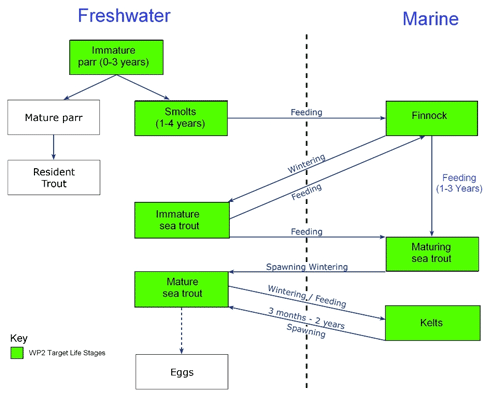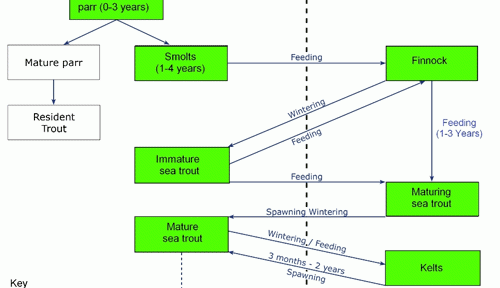More about sea trout
The sea trout is the sea migratory form of the brown trout and is a popular target of rod and net fisheries of rivers and coastal waters around the Irish Sea. Adult sea trout lay their eggs in river gravels, the young stages live for 1 to 3 years in freshwater before emigrating (as smolts) to sea where they feed hard and return after varying periods as mature adults, homing to the rivers of their birth to repeat the cycle. Thus the sea trout life cycle requires good environmental quality in freshwater, estuaries and at sea. Moreover, current understanding suggests that the incidence of sea trout and the composition and status of their stocks is sensitive to changes in the environments in which they live.

These life history features and the sea trout’s widespread occurrence, makes it a unique and potentially sensitive indicator of environmental change.
However, there are major unanswered questions in our understanding of sea trout, namely:
- where do they go at sea and how are their stocks structured and interlinked?
- what is their marine ecology (feeding, growth, survival and life history variation)?
- what environmental and other pressures are they exposed to at sea?
- how do their life histories (and thus fishery quality) respond to environmental variation, including climate change?
Sea trout fisheries in parts of Western Britain, including the Irish Sea, are suffering decline; but the pattern is mixed and in most cases the causes of change and thus the solutions are poorly understood. So we need answers to the question outlined above
The CSTP will provide this missing knowledge and translate it into fishery and conservation benefits for countries bordering the Irish Sea.
